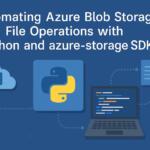Before diving into the storage and processing process, there are several key components to consider:
- Cloud Storage Service: Choose a cloud storage provider such as AWS S3, Google Cloud Storage, or Azure Blob Storage.
- Video Encoding: Cameras typically stream in various formats such as RTSP or H.264. Understanding the encoding used by your camera is essential for effective storage and processing.
- Internet Connectivity: Ensure a stable and high-bandwidth internet connection to facilitate smooth data transmission.
- Security Protocols: Set up encryption and authentication mechanisms to ensure the integrity and confidentiality of video data.
Configuring the Video Stream for Cloud Integration
To effectively store and process video feeds, the first step is configuring your security cameras for cloud-based streaming. Most modern cameras offer RTSP (Real-Time Streaming Protocol) or RTMP (Real-Time Messaging Protocol) support, which is crucial for establishing a real-time connection to cloud storage systems.
python
import cv2
import boto3
def stream_to_s3(camera_url, bucket_name):
# Open video stream from camera
capture = cv2.VideoCapture(camera_url)
# Initialize AWS S3 client
s3_client = boto3.client(‘s3’)
# Set up the video frame size and encoding format
fourcc = cv2.VideoWriter_fourcc(*’mp4v’) # Codec for .mp4
output_stream = cv2.VideoWriter(‘video_feed.mp4’, fourcc, 20.0, (640, 480))
while True:
ret, frame = capture.read()
if not ret:
break
# Write each frame to a local file
output_stream.write(frame)
# Upload the video file to S3
with open(‘video_feed.mp4’, ‘rb’) as file_data:
s3_client.upload_fileobj(file_data, bucket_name, ‘video_feed.mp4’)
capture.release()
output_stream.release()
This script captures video from a camera stream, encodes it, and uploads it directly to an AWS S3 bucket. You can replace boto3 with any cloud storage SDK depending on your provider.
Data Compression and Video File Storage
Video files tend to be large, and efficient compression is key to reducing storage costs while maintaining the quality of the footage. You can use several compression techniques such as H.264 or HEVC (H.265) to minimize the file size without compromising too much on quality.
Here’s how you might handle compression using ffmpeg:
ffmpeg -i input_stream.mp4 -vcodec libx264 -crf 24 -preset fast output_compressed.mp4
This command compresses the video stream to a more manageable size, preserving high video quality while optimizing storage.
Processing Video Feeds in the Cloud
Once the video feed is securely stored in the cloud, you might want to perform additional processing, such as object detection or motion analysis. Cloud services offer various APIs and services to process the data efficiently.
For instance, using AWS Lambda and Amazon Rekognition, you can analyze stored video frames for objects or faces:
python
import boto3
rekognition_client = boto3.client(‘rekognition’)
def process_video_frame(video_frame_path):
with open(video_frame_path, ‘rb’) as image:
response = rekognition_client.detect_labels(Image={‘Bytes’: image.read()})
for label in response[‘Labels’]:
print(f”Detected label: {label[‘Name’]} with confidence {label[‘Confidence’]}”)
This function uses AWS Rekognition to analyze the video feed for various objects. The results can help in real-time monitoring or in-depth post-event analysis.
Storing Metadata Alongside Video Files
For security and operational purposes, it is also valuable to store metadata alongside the video files. This metadata can include timestamp information, camera IDs, and detected events, which is useful for indexing and retrieving video content.
Here’s an example of how you might store metadata in a cloud database:
python
import pymysql
# Connect to cloud database
conn = pymysql.connect(host=’cloud_db_host’, user=’user’, password=’password’, db=’video_metadata’)
cursor = conn.cursor()
def store_metadata(camera_id, timestamp, event_type):
query = f”INSERT INTO video_events (camera_id, timestamp, event_type) VALUES ({camera_id}, ‘{timestamp}’, ‘{event_type}’)”
cursor.execute(query)
conn.commit()
store_metadata(1, ‘2025-02-20T10:30:00’, ‘motion_detected’)
By storing event-specific metadata, you make it easier to search through video archives and link recorded footage with specific events.
Video Retrieval and Playback
When storing large amounts of video data, efficient retrieval and playback become critical. Cloud storage solutions often provide APIs for retrieving video files on demand, allowing you to download, stream, or access the footage remotely.
In the case of AWS, you can use the get_object method to download a specific video:
python
s3_client.download_file(bucket_name, ‘video_feed.mp4’, ‘local_video.mp4’)
You can also use video streaming protocols (HLS, DASH) for adaptive streaming when dealing with large video files.
Security Considerations
Since video feeds can contain sensitive information, it’s crucial to implement strong security protocols. Here are some important steps:
- Encrypt video files both in transit and at rest using AES-256 or other strong encryption algorithms.
- Use IAM roles and policies to restrict access to video files based on user roles.
- Implement multi-factor authentication (MFA) for accessing the cloud storage interface.
These steps help ensure that video data remains secure throughout its lifecycle.
Scaling and Cost Optimization
As video storage requirements grow, scaling the infrastructure becomes essential. Cloud platforms offer various scaling solutions, such as auto-scaling in AWS, to handle increasing amounts of data. Additionally, cost optimization can be achieved by using tiered storage solutions, where frequently accessed footage is kept in high-performance storage, and less frequently accessed footage is moved to cheaper, long-term storage options.
We earn commissions using affiliate links.







![7 Best VPN for Security Cameras [year]: Secure Remote Monitoring Best VPN for Security Cameras](https://www.privateproxyguide.com/wp-content/uploads/2023/10/Best-VPN-for-Security-Cameras-150x150.jpg)
